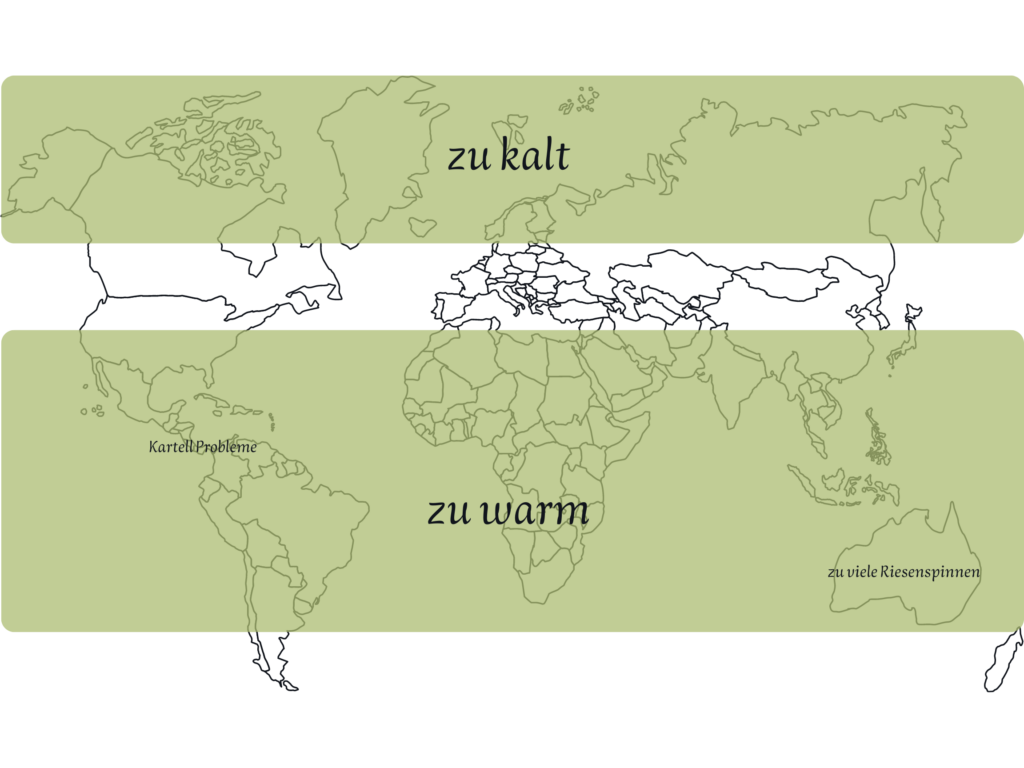When we decided to leave our life in Austria behind and emigrate to Canada, we were faced with a multitude of decisions. One of the most important was choosing the right emigration destination. In this blog post, we want to share how we selected our destination.
Personal Preferences and Arguments:
When deciding on our new place to live, our personal preferences and, to some extent, romanticized notions of other countries played a significant role.
Gernot was drawn to warmer regions, with plenty of sunshine and hot temperatures, preferably a place where you could live directly from coconut and orange trees, which offer their fruits year-round.
On the other hand, I feel extremely comfortable in cooler snowy landscapes, enjoying the warmth of a tiled stove with a good book. The enticing idea of a husky farm with sled rides and igloo mini-hotels for guests would have been quite appealing to me.
These differing preferences led to some discussions, but they also helped us engage deeply with our desires and expectations. Over the course of several weeks, we frequently discussed various countries, often losing our dreamy view of certain regions through extensive research (some of which was done purely to explain why a particular country was not a good idea).
I argued against the warmer climates, pointing out potential downsides such as parasites, an increase in mosquitoes, poor water quality, or generally poor healthcare systems, as well as higher crime rates and conflict zones.
However, Gernot countered by emphasizing the benefits of a warmer climate, like sufficient warmth and sunlight for establishing a permaculture and self-sufficiency in food production. He also highlighted that moving to a colder region would mean higher living costs due to long heating periods, as well as the need for greenhouses to extend growing seasons.

After many discussions and deliberations, we ultimately decided that a similar latitude would be the best compromise for our differing preferences and needs.
Other Countries at a Similar Latitude:
Now that we had ruled out a large portion of the world, it was time for detailed work. Countries like Germany, Switzerland, or France were quickly eliminated due to similar or even higher costs.
Spain and Italy were in the running for a while since they offered large plots of land, even entire villages, at affordable prices. However, the poor economy and increasing problems with desertification and the drying up of entire regions discouraged us.
This discussion introduced the additional aspect of natural disasters and climate change. Naturally, we didn’t want our new home to be flooded every few years, hit by an earthquake, or swept away by a hurricane.
And for those who know us, it’s clear that we can go from one topic to a thousand others in discussions. So, we also brought up other factors like crime rates, regulations, government structures, and crisis zones with potential unrest. The longer these conversations went on, the further we moved away from Europe—particularly from the eastern regions.

In principle, that left us with Canada and southern Siberia (these discussions were before the Ukraine war).
Language:
Another important aspect was the language. Many languages are complicated and difficult to learn (I tried to teach myself Hungarian for a few weeks). Emigrating and not being able to communicate is something we couldn’t imagine.
Thus, countries where English is an official language gained an additional advantage. It is important for us to integrate into society quickly and to establish ourselves professionally.
Costs:
The cost of living was also a crucial factor. Although our original evaluations have been somewhat thrown off by massive global inflation, Canada still offers a good price-performance ratio compared to many countries. Real estate prices can vary depending on the region, but overall they are more affordable than in many other countries. (Note: I am explicitly referring to prices outside of major urban areas! An apartment in Toronto is similar to those in Vienna or London—unaffordable, but also not what we were looking for.)
Infrastructure:
Infrastructure is another key point that excluded many countries. Here, too, Canada offers a high quality of life with a healthcare system very similar to Austria’s. The public transport network primarily focuses on airports, with trains and bus connections being rare in rural areas. Again, I am not talking about cities but rural areas.
Conclusion:
Here’s a quick summary of why we chose Canada:
- Temperature, including precipitation distribution and average sunshine hours, is similar to Austria
- Great value for land purchases
- Relatively few regulations on land use, except for water protection
- Minimal or no occurrence of natural disasters in the last 50 years
- Absence of poisonous insects, snakes, or other dangerous animals (aside from moose and, in very remote areas, bears)
- English as an official language (at least in the part of Canada we selected)
- Good infrastructure in healthcare (a system similar to Austria’s) and supply networks (electricity, food)
- Stable democracy with a relatively stable political landscape (as stable as governments can be nowadays)
- Low risk of being drawn into unrest or active war
Your Opinion?
What would you have considered when choosing a destination, or which of our criteria do you find unreasonable? Share your thoughts and questions in the comments below and become part of our community on this exciting journey toward self-sufficiency and permaculture. Together, we can learn, grow, and make our dreams come true!
